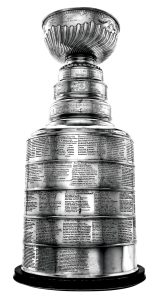4
These are difficult stories. We bear witness in this chapter to the role of sport in furthering the settler colonial projects throughout Turtle Island. Here are some supports to access in the community and from a distance:
First Peoples House of Learning Cultural Support & Counselling
Niijkiwendidaa Anishnaabekwag Services Circle (Counselling & Healing Services for Indigenous Women & their Families) – 1-800-663-2696
Nogojiwanong Friendship Centre (705) 775-0387
Peterborough Community Counselling Resource Centre: (705) 742-4258
Hope for Wellness – Indigenous help line (online chat also available) – 1-855-242-3310
LGBT Youthline: askus@youthline.ca or text (647)694-4275
National Indian Residential School Crisis Line – 1-866-925-4419
Talk4Healing (a culturally-grounded helpline for Indigenous women):1-855-5544-HEAL
Section One: History
A) The Residential School System
Exercise 1: Notebook Prompt
We are asked to honour these stories with open hearts and open minds.
Which part of the chapter stood out to you? What were your feelings as you read it? (50 words)
| The part of the chapter that stood out to me was how Indigenous people were not accepted to fight for Canada at first, then were actively recruited for the military. The original discrimination to me seemed to be from a racial standpoint, then the high requirements of their people also seemed to come from a racial standpoint.
|
B) Keywords
Exercise 2: Notebook Prompt
Briefly define (point form is fine) one of the keywords in the padlet (may be one that you added yourself).
|
C) Settler Colonialism
Exercise 3: Complete the Activities
Exercise 4: Notebook Prompt
Although we have discussed in this module how the colonial project sought to suppress Indigenous cultures, it is important to note that it also appropriates and adapts Indigenous cultures and “body movement practices” (75) as part of a larger endeavour to “make settlers Indigenous” (75).
What does this look like? (write 2 or 3 sentences)
| This can be seen in institutions like residential schools, where they force Catholic and Western values as the norm. For example, Indigenous boys in residential schools were trained in military-style programs, which relates to Indigenous warrior traditions, but were forced to serve the Britsh, their colonizers.
|
D) The Colonial Archive
Exercise 5: Complete the Activities
Section Two: Reconciliation
A) Reconciliation?
Exercise 6: Activity and Notebook Prompt
Visit the story called “The Skate” for an in-depth exploration of sport in the residential school system. At the bottom of the page you will see four questions to which you may respond by tweet, facebook message, or email:
How much freedom did you have to play as a child?
What values do we learn from different sports and games?
When residential staff took photos, what impression did they try to create?
Answer one of these questions (drawing on what you have learned in section one of this module or prior reading) and record it in your Notebook.
| As a child, I had a lot of freedom to play, which is not always the case for every child. I was allowed to play any sport, and I was exposed to all kinds of toys and activities allowing me the ability to build all kinds of skills and grow my knowledge. People often do not have this kind of freedom due to many factors such as finances, guardian views/perceptions, and other environmental factors.
|
B) Redefining Sport
B) Sport as Medicine
Exercise 7: Notebook Prompt
Make note of the many ways sport is considered medicine by the people interviewed in this video.
|
C) Sport For development
Exercise 7: Notebook Prompt
What does Waneek Horn-Miller mean when she says that the government is “trying but still approaching Indigenous sport development in a very colonial way”?
| She means that even though there are efforts to support Indigenous athletes and communities, the government’s methods are often still rooted in colonial perspectives. This is because government programs do not really involve Indigenous voices, they also do not truly incorporate Indigenous traditions and values within sports. |
Exercise 8: Padlet Prompt
Add an image or brief comment reflecting some of “binding cultural symbols that constitute Canadian hockey discourse in Canada.” Record your responses in your Notebook as well.
 |
Section Three: Decolonization
Please see the major assignment for this half of the term in the final section of this chapter.

